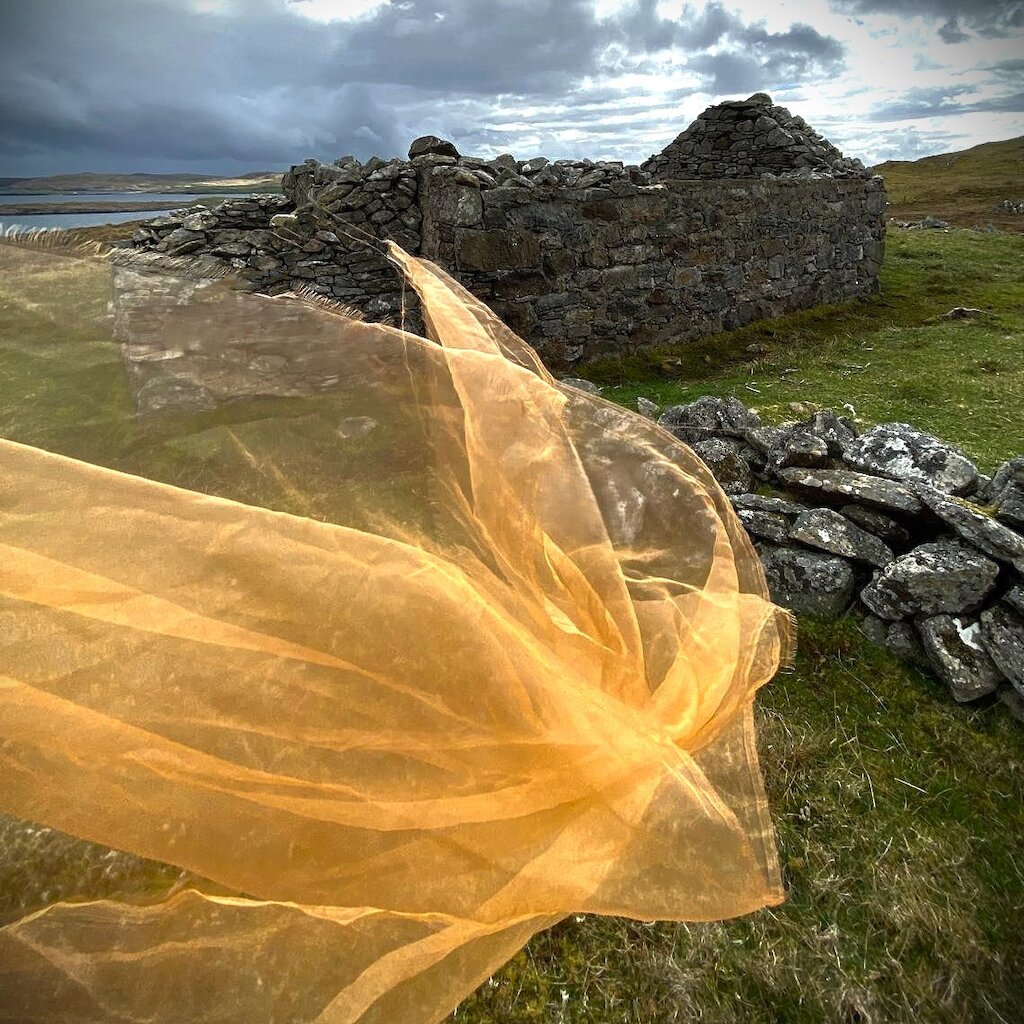Shetland Arts’ Exhibitions Manager Jane Matthews introduced the event before handing over to Dinh Q. Lê and Artangel’s Phoebe Roberts.
Roberts explained that Artangel is a London-based arts organisation that prides itself on allowing artists to create work that would simply not be possible within the confines of a gallery. She said how the organisation tended to “tour art with a lasting effect”.
Lê took over from there and spoke to the audience about being caught in the crosshairs of conflict aged ten and having no choice but to flee to America from Vietnam in 1978. Once in Los Angeles, Lê completed his education, going through both the University of California and School of Visual Arts in New York.
Throughout his life, Lê has been artistically focused on the writing and rewriting of the Vietnamese War, which took place over almost 20 years between 1955 and 1975. He spoke of imagery, which has stuck with him throughout his life after learning about US helicopters being pushed off an aircraft carrier near Saigon to make room for more so that they could leave. It always conjured the image in his mind of a graveyard of helicopters.
Artangel approached him in 2015 with the offer to create something that made him step outside his comfort zone, which interested Lê greatly. After some thinking, he decided to go to the exact opposite of the world to Vietnam, which worked out to be Peru. An event, which drew parallels to his homeland that occurred in Peru, was the battle between Spain, America and Peru for the Chincha Islands from 1864 to 1866. Lê recalled learning about this in high school and wanted to find out more.
Prior to the discovery of chemical fertilisers, the Chincha Islands were sought after for their vast amounts of guano (the excrement of seabirds, used as fertiliser). As something in the Bible was interpreted as not being allowed to rotate crops, soil in Europe had seen better days, so the masses of guano in Peru were coveted by a large percentage of the world.
Because of the El Nino effect, it only rains in the Chincha Islands every eighteen years, allowing the Guano to build up massively, at its peak around 90 metres. The saying at the time was that it was more precious than gold.
The United States were beginning their global expansion at this time and came to get the resource, almost sparking war. Eventually Peru relented and Spain and the USA began shipping Chinese servants to the Chincha Islands under the pretense of going to California for the Gold Rush. They were then set to work for almost seven years.
Oppressive conditions, no escape and long, intense hours led to huge levels of suicide. Eventually, the Chinese empire stopped the trade. The Japanese replaced them for a short time too.
Not much has changed physically in the islands, still clear visual effects of the abuse to the land by the foreign workers. Now though, the Peruvian government manages it. Two wardens live on each island, making life on the islands very isolated.
Work still has to be completed manually as no machinery could be brought in because of the logistics of the terrain and the countless amount of birds on the islands. The labour is no longer so harsh but tics now cover the island because of cows brought over by the American government many years before.
In order to get a real feel for the islands and the hardships that had taken place there, Dinh Q. Lê felt he had to physically go there and take in the sights. While visiting, Lê was not allowed to visit living areas of workers or even directly talk to them, guidelines put in place by the Peruvian government to prevent Lê from doing an exposé on worker conditions. This was never his intentions anyway, so he agreed and got to work.
After visiting the islands for a prolonged period, Lê began work on a multi-sensory exhibition. With a three-screen experience in mind, each of the screens representing either past, present or future, the artist commissioned LA-based composer Daniel Wohl to create an elegiac yet beautiful soundtrack to compliment his photography. Interestingly, each of the screens have different music when close to them yet they widely work together when listening to all three at once.
Shetland Arts will be delighted to welcome Lê’s work to the auditorium at Mareel in February – although he admits it may be a different version to the one that has previously toured as he has so much footage and didn’t want to leave anything out.
An engaging talk with an intriguing individual, Dinh Q. Lê’s work is not to be missed.



